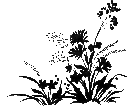 |
The Preserve |
News and Events |
Natural History |
The Trail |
Monitoring |
Restoration |
Library |
Organization |
|
Todmorden Mills Wildflower Preserve
|
Nature NotesYour Nature Guide for the week of October 4-October 10WildflowersThe trailing vines that were so noticeable in summer when they quickly colonized the new clearing below Helliwell House, have started to die back, revealing the ripe fruits. Close inspection shows that most of the vines are Bur Cucumber. The fruits, which are like clusters of burnt almonds covered in long hairs, are quite distinctive and very different from the other native cucumber at Todmorden, the Wild Cucumber. Bur Cucumber can invade fields adjacent to damp woods, and corn growers often have to control it. Introduced to Europe, it has become a problem in several countries and it is considered an invasive in Italy. Most of the wildflowers have finished blooming, but some of the most resilient are still flowering. In open areas, look for the blue-flowered Chicory, the asters (both purples and whites), and the yellow Butter-and-Eggs. InsectsInsect activity has declined substantially, but the field and tree crickets can still be heard, if not with their previous intensity. Many of them are laying eggs--the field crickets in damp, sandy soil, the tree crickets inside the twigs of trees and shrubs--which will overwinter and hatch next spring. TreesOne of the earliest trees to "turn" in fall is White Ash. Its leaves change to a deep purple-red, quite unlike most other trees. At Todmorden, White Ash, along with Sugar Maple, is being planted extensively. Both species share a handy identification trait: opposite branching, and are easily the most common native trees with this feature. There the resemblance ends, as Ash has a compound leaf comprised of 7-9 leaflets, whereas Sugar Maple has the familiar simple, lobed leaves. This spring, hundreds of small ash were planted on the eastern slopes, and a check recently shows that nearly all were leafed out and looking healthy. Ash trees have been a favourite of urban foresters, and many of Toronto streets are lined with Green Ash, a native species which is quite tolerant of pollution and salt, and the European Black Ash. At present, the distinctive paddle-shaped fruit are dropping onto sidewalks throughout Toronto. FishThe oxbow at Todmorden is an old arm of the Don River, severed when the Parkway was built in the late 1950s. Today, instead of watching salmon cruise through the Preserve en-route to spawning grounds in the headwaters, we must content ourselves with minnows and sticklebacks. These, by the way, have colonized naturally, perhaps repeatedly, when the Don River floods and backs up through a culvert into the Preserve; the last time this happened was in 2001. Salmon are again migrating up the rivers around Toronto to spawn and while they bypass Todmorden Mills, it is still possible to watch them at points along the Don River. The salmon we can see today are Coho and Chinook Salmon which were introduced to Lake Ontario in the late 1960s as predators on alewife, itself an introduced fish. Initially the salmon populations were sustained by hatchery fish, but today there are established wild populations of these two species. Nature Notes is researched and written by Mike Dennison and Alejandro Lynch, and is published each week by Hopscotch Interactive (www.hopscotch.ca). In addition to this online version, Nature Notes is available as a print-friendly PDF and as a text-only email version. Please contact Mike Dennison to receive these, or for more info (tel: 416-696-7230, email: dennison@hopscotch.ca). |
| Copyright © 2003-2004 Todmorden Mills Wildflower Preserve |